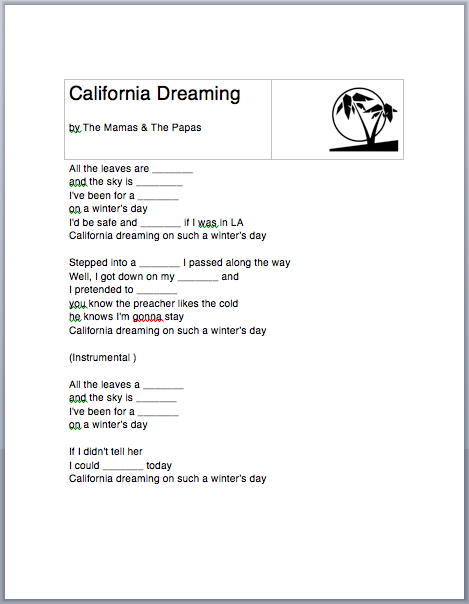Should you be California dreaming? – Page 2 of 4 – StartupSmart
Patrick Collins is president of 5th Finger, a mobile marketing company that links brands to consumers via SMS, MMS, email and voice services.
What was your business idea?
5th Finger is the global authority on in-store mobile marketing, converting shoppers into buyers through in-store mobile apps. We bring our unique in-store shopper experience to over 15,000 stores with top retailers such as Victoria’s Secret, Bath & Body Works, Safeway, Jo-Ann and Jos. A. Bank.
Unmatched depth of experience and unique in-store mobile applications have made 5th Finger an award-winning global mobile marketing leader. Our apps inspire and guide customers, deliver m-coupons, enable m-commerce and create shopper loyalty.
Through integration with other consumer touch points including SMS, email, web and call centre, we ensure successful adoption of the mobile experience.
How did you look to commercialise it?
5th Finger had already been built into a successful business in Australia, which we sold to ninemsn in 2005. Since we are serial entrepreneurs, we decided to re-start the business in the US with a much tighter focus.
Based on the success of 5th Finger Australia and in partnership with ninemsn, we raised AUD $7 million in venture capital finance from Melbourne-based Starfish Venture Partners to relocate the team and bring the technology to the US.
Why did you head to the US?
When we decided to start our business in the US, we were also considering other markets such as Europe and Malaysia. We chose the US because the mobile marketing industry in the US was just starting to boom. The language barriers were lower and the market is large.
We chose to base ourselves in San Francisco in order to stay close to one of the largest capital markets in the world and also because the time zone overlap to Australia was much friendlier.
With the funding we raised from Starfish Venture Partners, we relocated a number of Australian employees to seed our new US company culture and to ensure we had the skills to hit the ground running.
How do you view the Australian market?
I will restrict my comments to the Australian high tech market. The Australian market is full of amazing entrepreneurs who are savvy and worldly professionals.
They have great business ideas and great execution capabilities. However, they are most often stifled; stifled by the population and size of our own country.
Companies that build consumer-facing propositions have a higher chance of success given that these business models tend to be less location-centric.
However, consumer-facing business models often demand higher levels of cash than the Australian investment industry has at its disposal.
In the US, a $500,000 seed round can be obtained for a good idea and a seasoned professional fairly easily. Only the rare business in Australia can obtain a seed round of that size off an idea and a prototype.
What does the Australian market need to do to better support these start-ups?
Australians form strong international networks. For instance, the Australian expat community is strong in San Francisco and Silicon Valley.
These Australians, including myself, could do more to support their fellow Aussies in starting their business in other markets, including in the US.
Groups like ANZA, the Australian American Chamber of Commerce, and Advance all provide great opportunities for Aussies to network. I do think these networks could consolidate and pool their energies.
Secondly, the Australian Export Market Development Grant has been a real boost for my business and helped us tremendously during the difficult times of the global financial crisis.
I’m very proud that the Australian government has such a scheme in place to help the export of Aussie technology.
Domestically, I believe that the Aussie market needs to view itself as a launching pad rather than a full blown market. Aussie companies who figure that out quickly seem to do well.
There is a general view that the Australian government could provide more financial support to start-ups. I do not believe that this is the government’s job and I think the size and type of the capital markets is the primary challenge in providing further capital to Australian companies.
What tips would you give to other tech start-ups?
In doing business in the US, my biggest tip is to focus. Due to the smaller size of our domestic market, we are forced to diversify our offerings in order to generate the revenue growth required.
As a result, great businesspeople in Australia tend to lead their companies to be great generalists in a given field.
5th Finger in Australia ran a broad business offering and we could compete well against other companies who ran broad business offerings. However in the US, companies fiercely go after a very specific client dollar in a specific market with a specific purpose.
It seems counterintuitive to an Aussie travelling to the US, where the opportunity seems so large, that they are unwilling to focus on just one particular client dollar when they have such a broad toolkit of products which could be of use.
We learned this lesson late and I have seen other Aussie companies come to the US and find it difficult to adjust to this dynamic.
What are your ambitions?
5th Finger is growing rapidly in the US and we are predicting 80% revenue growth this year. We see a fantastic opportunity for retailers to use the mobile phone to capitalise on the shifting consumer behavior when they’re standing in-store. We will be the largest business in the US servicing this sector.
Mobile is evolving beyond standalone m-commerce. 5th Finger offers in-store solutions that elevate the conversation from m-commerce to “m-enabled commerce” where we integrate the world of the in-store application and traditional m-commerce.

